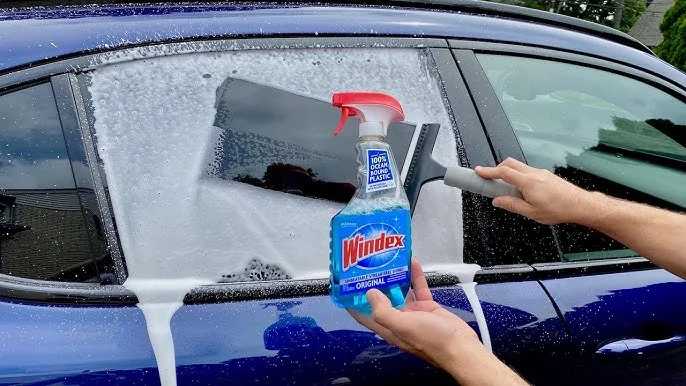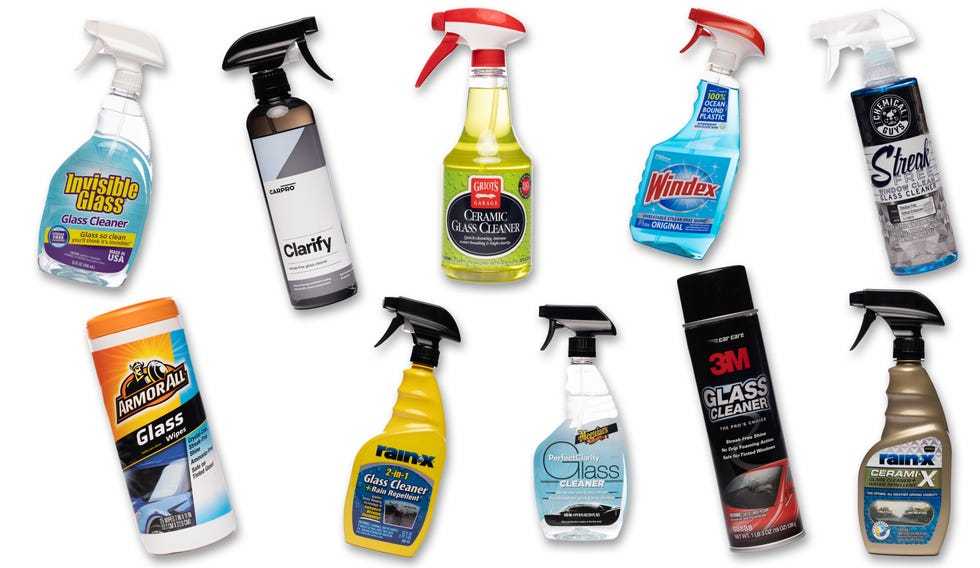To make your glass sparkle like new, start by cleaning the surface thoroughly with a mild soap and water to remove dirt and grime. Then, apply a small amount of glass polish with a soft cloth, using circular motions to buff out streaks and smudges. Finish by wiping with a clean, dry cloth for a crystal-clear finish.
Using glass polish is simple and effective if you follow the right steps. First, clean the surface to eliminate dust and dirt, which can cause scratches. Next, apply the polish evenly using a soft cloth and buff gently in circular motions. Finally, wipe away any residue with a separate clean cloth to achieve a shiny, streak-free surface. With a little practice, you’ll be able to keep all your glass surfaces looking pristine and gleaming effortlessly.
How to Use Glass Polish
Using glass polish correctly is essential to achieve a crystal-clear, shiny surface. Proper application removes dirt, stains, and minor scratches from glass, restoring its brilliance. This guide will walk you through every step to ensure perfect results each time you polish your glass.
Gathering Your Supplies
Before starting, collect all necessary tools and products. Having everything ready saves time and keeps your process smooth. Typical supplies include glass polish, microfiber cloths, gloves, a sponge, and cleaning solution.
- Glass Polish: Choose a product suitable for your specific glass type and staining level.
- Microfiber Cloths: Soft cloths prevent scratches and help buff the surface evenly.
- Cleaning Solution: Use a gentle glass cleaner to remove dirt before polishing.
- Gloves: Protect your hands from chemicals, especially with strong polishes.
Preparing the Glass Surface
Start with a clean surface for best results. Remove dust, fingerprints, and grime using a glass cleaner and a soft cloth. This step prevents additional scratches during polishing.
Ensure the glass is dry before applying polish to avoid dilution or uneven application. For heavily stained or dirty glass, repeat cleaning until the surface is spotless.
Applying Glass Polish Properly
Step 1: Test on a Small Area
Always test the polish on a tiny, inconspicuous spot first. This helps ensure the product is safe for your glass and does not cause any damage or discoloration.
Step 2: Apply the Polish
Squeeze a small amount of glass polish onto a clean microfiber cloth. Use a circular motion to gently spread the polish across the glass surface. Avoid applying excessive product, which can lead to streaks or residue.
Step 3: Let the Polish Sit
Allow the polish to sit for the time recommended on the product label. This usually ranges from a few seconds to a minute. This pause helps break down stains and embedded dirt.
Step 4: Buff the Surface
Using a clean, dry microfiber cloth, buff the glass in circular motions. Apply gentle pressure to remove the polish along with any loosened dirt or scratches. Make sure to cover the entire surface evenly.
Techniques for Better Results
Use Consistent Motion
Always move the cloth in circular or back-and-forth motions without pressing too hard. Consistency ensures even polishing and prevents streaks.
Work in Sections
Divide the glass into manageable sections. Finish one section before moving to the next. This technique means no area gets overlooked or over-polished.
Check Your Progress
Periodically step back and inspect the surface. Look for streaks or missed spots and re-polish as necessary to achieve uniform clarity.
Handling Different Types of Glass
Glass Windows
Use a broad, flat cloth to cover large surfaces, ensuring even polishing. Be cautious around edges to avoid applying too much pressure, which could crack or damage the glass.
Glass Tabletops
Use a softer cloth and less polish for delicate surfaces. Avoid using abrasive materials that can scratch the glass or remove protective coatings.
Glass Mirrors
Mirror surfaces can be sensitive to harsh chemicals. Opt for gentle polish formulas designed specifically for reflective surfaces for the best results.
Cleaning Up After Polishing
Once you finish polishing, wipe down the glass with a clean, dry microfiber cloth to remove any remaining residue. This step enhances shine and streak-free clarity.
If streaks persist, dampen a cloth with water and gently wipe the glass, then buff dry again for a perfect finish.
Tips for Maintaining Glass Shine
- Repeat polishing every few months to keep glass looking fresh and clear.
- Handle glass carefully to avoid new scratches or stains.
- Use protective coatings or sealants for added durability.
- Avoid abrasive cleaners or scrub brushes that may damage the surface.
Additional Tips for Successful Glass Polishing
Work in Well-Lit Areas
Good lighting helps you see streaks and missed spots, ensuring a thorough job. Natural light or bright indoor lighting is ideal.
Maintain a Clean Workspace
Regularly clean your cloths and tools to prevent dirt re-introduction onto polished surfaces. Dirty tools can cause scratches or uneven results.
Choose the Right Polish
Read product labels carefully and select a polish compatible with your glass type. Some products are formulated specifically for car windows, mirrors, or household glass.
Common Mistakes to Avoid
- Applying too much polish, leading to residue or streaks.
- Skipping the cleaning step before polishing, which traps dirt and causes scratches.
- Using abrasive materials or rough cloths, risking damage to the glass surface.
- Not testing the polish on a small area first, which can result in unwanted effects.
Summary of the Glass Polish Process
| Step | Action | Tip |
|---|---|---|
| Preparation | Clean the glass thoroughly | Use a gentle glass cleaner and a soft cloth |
| Test Spot | Apply polish to a small, hidden area | Ensure compatibility before full application |
| Application | Squeeze polish onto cloth and spread evenly | Avoid excess product to prevent streaks |
| Wait | Allow polish to sit as per instructions | This breaks down stains and dirt |
| Buffing | Use a dry cloth to buff in circular motions | Apply gentle pressure for best shine |
| Finishing | Wipe with a clean cloth to remove residue | Achieves streak-free clarity |
Additional Related Topics
- Choosing the Best Glass Polish for Your Needs: Learn about different types and brands.
- How to Remove Scratches from Glass: Step-by-step techniques and suggested products.
- Preventing Glass Stains and Dirt: Tips for maintaining glass longer.
This comprehensive approach to using glass polish ensures your surfaces stay clear, shiny, and beautiful. Consistent application along with proper technique guarantees the best results and prolongs the life of your glass items.
How to use Autoglym Car Glass Polish
Frequently Asked Questions
What are the steps to prepare the glass surface before applying the polish?
Applying glass polish works best when the surface is thoroughly cleaned first. Use a soft cloth or paper towel to remove any dust, dirt, or fingerprints. For stubborn stains, dampen the cloth slightly with a mixture of water and a mild cleaner. Wipe the glass with gentle, circular motions to ensure all debris is lifted. After cleaning, dry the surface completely with a dry, lint-free cloth to prevent water spots from interfering with the polishing process.
How can I achieve a streak-free finish when polishing glass?
To get a streak-free shine, apply the polish in small sections using a clean, soft cloth. Use gentle, circular motions to spread the product evenly across the surface. After applying the polish, use a separate dry cloth to buff the glass with quick, back-and-forth strokes. Make sure to work in well-lit conditions so you can spot and eliminate any remaining streaks. If streaks appear, re-buff the area gently until the surface looks clear and glossy.
What is the best way to maintain the shine after polishing?
Maintain the glass’s shine by regularly cleaning it to remove dust and smudges. Use a soft, damp cloth combined with a gentle glass cleaner between polishing sessions. Avoid harsh chemicals that can damage the polish or leave residues. For long-lasting results, periodically reapply a thin layer of glass polish, especially on frequently used surfaces. Proper maintenance helps keep your glass looking clear, smooth, and reflective over time.
Final Thoughts
To use glass polish effectively, start by cleaning the surface with a gentle cleaner to remove dust and dirt. Apply a small amount of polish onto a soft cloth and spread it evenly across the glass. Use circular motions to buff the surface until it shines.
Remember to follow the manufacturer’s instructions for best results. Regular polishing helps maintain clarity and prevents scratches.
In conclusion, knowing how to use glass polish ensures your glass remains clear and spotless, saving you effort and time.



